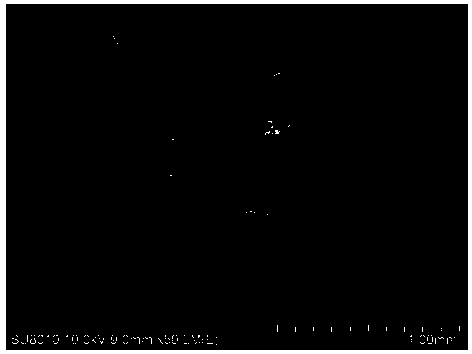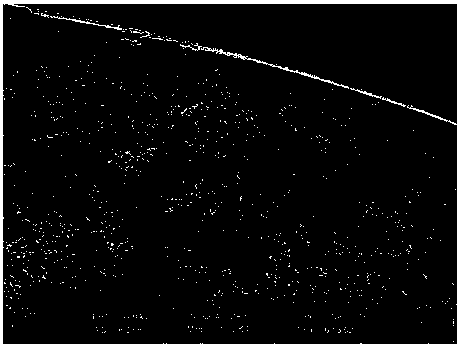Food-grade polyvinylidene fluoride membrane and manufacturing method thereof
A technology of polyvinylidene fluoride film and polyvinylidene fluoride, which is applied in the field of food-grade polyvinylidene fluoride film and its manufacturing, to achieve the effects of no additional pollution, high throughput, and less leached matter
- Summary
- Abstract
- Description
- Claims
- Application Information
AI Technical Summary
Problems solved by technology
Method used
Image
Examples
Embodiment 1
[0037] A method for manufacturing a food-grade polyvinylidene fluoride film, comprising the following steps:
[0038] 1) Prepare a homogeneous polyvinylidene fluoride solution: 25 parts by weight of polyvinylidene fluoride PVDF (Blue Sky 2212) and 2 parts by weight of food-grade hydrophilic second polymer sulfonated polysulfone ([η]=0.6) Prepare a uniform and stable polyvinylidene fluoride solution with 73 parts by weight of organic solvent N,N-dimethylacetamide, and keep the temperature at 90°C;
[0039]2) Mold forming: while maintaining the uniform distribution of the four strands of reinforcing fiber filaments, send the degassed homogeneous solution at 90°C to the forming hollow mold, and at the same time, the internal liquid formed with water is sprayed from the double annular nozzle;
[0040] 3) Pass the molded product obtained in step 2) through a 20cm air gap, and immerse it in a coagulation water bath formed by 40°C water to complete the formation and fixation of the m...
Embodiment 2
[0070] Except step 5) replacing 5 parts by weight of NaCl in the brine bath with 2.5 parts by weight of NaCl, the hollow fiber membrane was produced according to the same formula and process as in Example 1.
[0071] The pure water flux of the membrane before drying was 630 LMH, the pure water flux after drying was 496 LMH, and the water content of the membrane after drying was 0.9% by weight. The films were tested for leaching substances, and the results are shown in Table 1. The further reduction of the concentration of the pore retaining agent sodium chloride further reduces the water content and pure water flux of the dried membrane. The extractables are similar to Example 1, both of which are hollow membranes with a very low amount of extractables.
Embodiment 3
[0073] The hollow fiber membrane was manufactured according to the same formula and process as in Example 1, except that 2 parts by weight of sulfonated polysulfone in the membrane-making stock solution was replaced by 2 parts by weight of cellulose acetate (CA 398-10).
[0074] The pure water flux of the membrane before drying was 550 LMH, the pure water flux after drying was 488 LMH, and the water content of the membrane after drying was 1.7% by weight. The films were tested for leaching substances, and the results are shown in Table 1. Since no water-soluble macromolecular PVP, PEG, surfactant and other organic substances are added to the stock solution, and no organic pore retaining agent such as glycerin is used in the post-treatment drying process, the absorbance of the film is below 0.04. The content of extractables is very small.
PUM
| Property | Measurement | Unit |
|---|---|---|
| Pure water flux | aaaaa | aaaaa |
| Aperture | aaaaa | aaaaa |
| Aperture | aaaaa | aaaaa |
Abstract
Description
Claims
Application Information
 Login to View More
Login to View More - Generate Ideas
- Intellectual Property
- Life Sciences
- Materials
- Tech Scout
- Unparalleled Data Quality
- Higher Quality Content
- 60% Fewer Hallucinations
Browse by: Latest US Patents, China's latest patents, Technical Efficacy Thesaurus, Application Domain, Technology Topic, Popular Technical Reports.
© 2025 PatSnap. All rights reserved.Legal|Privacy policy|Modern Slavery Act Transparency Statement|Sitemap|About US| Contact US: help@patsnap.com



